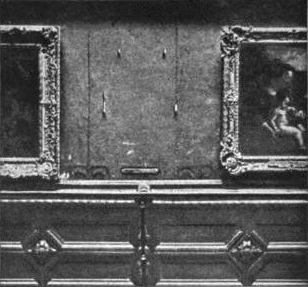Stopping Art Thieves with Synthetic DNA | Junzi Fine Art
 Posted on November 1, 2014
Posted on November 1, 2014
 by socialmedia
by socialmedia  0
0 As early as next year, a new tool will be available to prevent art theft from ever happening. The tool is an individual, encrypted DNA label. This isn’t the type of DNA found in human cells, but rather a synthetic short-strand version. Each strand of DNA will be unique to the artist it is assigned to. The creators of the technology explain that it’s like a biological calling card.
The tiny DNA sequences will be hidden in a small sticker that can be placed discreetly on the artwork. When authenticating the piece, scientists can read the DNA in the label and compare it to an archive to confirm the right sequence was on the piece of art. Only those with access to the secret archive will know which sequence was assigned to which piece of art.
This hiding-in-plain sight methodology will deter criminals because they won’t know which DNA sequence was assigned to which piece of art, nor will they have the tools needed to create their own synthetic DNA. The cost of purchasing the lab equipment needed to create synthetic DNA and finding people who know how to use it is so high that art theft will no longer be lucrative. \
So who is behind the new technology? The idea of adding synthetic DNA labels to art was a group effort. A team of scientists, academics, curators, conservators, artists, lawyers and other specialists came together at the Global Center of Innovation at the University of Albany to find a way to easily tag original artwork. The development of such a technology was one goal outlined in the i2M Standards initiative and was designed to create new authentication methods to help preserve the integrity of the art world.
Some people are wondering why DNA was chosen. The reason is because it’s virtually unbreakable and there’s already a legal precedence of using DNA as proof. One of the battles the team faced when trying to come up with an anti-theft measure was finding a technology that was already verified and could be implemented quickly. Synthetic DNA does that.
It’s not just curators that are getting excited about the new technology. Roughly 40 living artists have already signed up to partake in the first phase of the initiative. The creators are hoping that the labels will be verified every time a piece changes hands, going through a special validation process and recording all sales. This way, the artwork can be tracked and a complete ownership history can be formed. Labels that are tampered with will be easy to identify and the added security will help alleviate financial risks of investors looking to purchase large pieces of art.
Stage two of the project will involve getting galleries on board and helping them tag existing pieces. Custom tags are also in the pipeline that can be applied to areas other than the backs of paintings. It is expected that soon all new art will be outfit with the tags and many of the older, historical works will also be tagged.
Junzi Fine Art is a leader in supporting technology that shapes and supports the future art market. Joseph Manqueros is an innovator in the gallery and consultancy market, assisting and educating galleries and artists on implementing the latest technology to increase, expand, and further develop their art, exposure, and marketability.
You must be logged in to post a comment.

